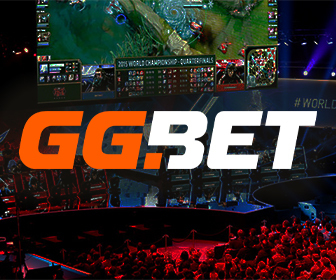In both sports and video games, the pursuit of mastery is what keeps people coming back. Whether it is a last-minute goal or a perfectly executed combo, players thrive on the same sense of tension, timing, and reward. As technology continues to blur the line between physical and digital play, the relationship between sports strategy and game design has become closer than ever. What began as a shared passion for competition has evolved into a deep exchange of ideas that now influences how games are built, played, and experienced.
From the Stadium to the Screen: How Digital Innovation Changed the Game
Digitization has transformed the way people experience sport. From real-time analytics on player performance to AI-driven match simulations, technology has enhanced how fans and athletes alike engage with every aspect of the game. Live tracking systems now provide instant replays, tactical insights, and even fan participation through augmented and virtual reality. The modern sports industry has become an interactive ecosystem, built as much on data as on instinct.
For fans, this shift has also opened up new ways to engage with their favorite teams and athletes. Among these developments, online sports betting has become a major component of the digital fan experience. Today’s platforms offer detailed statistics, live updates, and even predictive models that mirror the analytical depth found in professional coaching. Fans are no longer just spectators; they are participants in the larger strategic narrative of sport.
When it comes to top european sports betting sites, users are drawn by the convenience and sophistication these platforms now provide. They offer real-time odds, fast transactions, and a level of accessibility that has reshaped how people interact with their favorite sports. Other key perks include:
- Seamless mobile integration, allowing fans to stay connected during live events.
- Advanced security and privacy features
- Ensuring safe transactions and trusted experiences.
This integration of data, accessibility, and digital design has made these platforms particularly popular across Europe, especially with younger audiences who prefer instant engagement and smooth user interfaces. The rise of such technology reflects how digital design principles, so central to gaming, are now embedded in how sports are followed and understood.
The Shared Psychology of Sports and Games
At their core, both sports and games rely on a balance of skill, risk, and reward. Players must make rapid decisions under pressure, interpret dynamic environments, and anticipate opponents’ moves. Game designers often study this very tension, the push and pull between challenge and reward, to create experiences that feel authentic and emotionally engaging.
Sports, like great games, are built around systems that reward persistence and understanding. Each has:
- Clear objectives that define success and failure.
- Rules and boundaries that guide creativity and strategy.
- Incremental challenges that build toward mastery.
- A community of participants, where progress and identity are shaped by shared experience.
When these elements align, players on the pitch or on the screen enter what designers call a flow state, that focused rhythm where skill and challenge meet. It is this psychological connection that makes sports and games so universally compelling.
Lessons for Game Designers from the World of Sport
Sports offer game designers a blueprint for what truly motivates players: clarity, competition, and community. Every match, like every well-designed level, has a rhythm. It begins with exploration and learning, builds through tension, and concludes with resolution. Great games, much like great sports, keep this rhythm alive across multiple sessions, encouraging constant improvement and discovery.
Designers can also learn from how sport adapts to changes over time. Football, for instance, continuously refines its rules to maintain fairness and excitement, just as game studios tweak mechanics to balance gameplay. Similarly, athletes rely on instant feedback to improve performance, something mirrored in how modern games provide real-time data to help players evolve.
Sports also remind developers that emotion is as vital as logic. The elation of victory and the sting of defeat are feelings that both athletes and gamers understand instinctively. The most successful titles in gaming history, those that keep players hooked for years, do not just simulate sport; they capture that emotional arc.
Why Strategy Still Wins in the End
Whether designing a game or leading a team, strategy remains the thread that binds action to outcome. The lessons of sport, such as resilience, adaptability, and teamwork, translate naturally into the logic of modern game design. As technology continues to merge physical and digital play, the line between the player, the spectator, and the designer grows thinner.
Ultimately, both sports and games are about the same pursuit: improvement through understanding. They reward those who learn patterns, anticipate changes, and adapt under pressure. And while technology has made this connection clearer than ever, the underlying truth remains timeless. Whether you are holding a controller or standing on a pitch, the real game is always about strategy.

